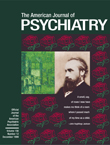Alexander Solzhenitsyn: A Century in His Life
It is now widely acknowledged that biography is merely a form of applied fiction; it is the creation of a life rather than its re-creation. Therefore, it is entirely appropriate that D.M. Thomas, a distinguished novelist, has written this biography of Alexander Solzhenitsyn. Thomas brings to the task a long-standing interest in Russian history, a knowledge of its language sufficient to act as a published translator of Russian poetry, psychological sensibilities honed by an understanding of psychoanalysis, and a novelist’s narrative style. This latter skill is particularly important because, as the book’s subtitle (A Century in His Life) suggests, Thomas wishes to place Solzhenitsyn in historical context, to illustrate his entwined life and art and his role as the conscience of a culture.
Stalin’s Russia certainly needed the conscience provided by The First Circle(1), Cancer Ward(2), and The Gulag Archipelago(3). It had been responsible for 45 to 60 million deaths. Solzhenitsyn brought to his own experience of the camps, of the Gulag, a ferocity, a rejection of the sense of moderation, and, in the words of Sakharov, anger, mournfulness, and a sardonic view that communicated the daily horrors of this history. As Thomas notes, he “knew it was his duty to embody truth” (p. 530). “A man who could write and fight with demonic energy could not also be your clubbable nice guy from next door” (p. 380). He felt he “had” to leave his wife and children to carry on his writing, 12 to 14 hours a day, 7 days a week. If “they” were to take his children as hostages it would not stop him: “Our children were no dearer to us than the memory of the millions done to death, and nothing could make us stop that book” (p. 400). After 15 minutes at the celebratory meal of his son’s christening, he left to continue his writing. Nothing was more important than his work. Not nice, but a hardworking and effective writer.
Solzhenitsyn was brought up surrounded by anxious, supportive, and helpful women, a circumstance he managed to recreate throughout his life. He found an idealized father, first in Lenin, then in God. Thomas suggests that exile from Russia and from his great theme of Stalinism and the Gulag exposed Solzhenitsyn’s major weakness. His early works are great because he did not have to invent hell; the Gulag was a projection of his own repressed violence. However, early and strong repression of feelings and an unwillingness to look beneath the surface ultimately limited his ability to explore “the heart’s dark forest” (p. 484). Nonetheless, he remains one of the sentinels of righteousness in our day, a novelist and historian who provides a “thickness of texture, a sense of particularity” (4) to his work. Similarly, Thomas brings those same characteristics to the presentation of Solzhenitsyn’s life. Just as Solzhenitsyn repeatedly brought the details of his own life into his fiction, Thomas uses them to reveal the person in all his reality and vigor.
1. Solzhenitsyn A: The First Circle. New York, HarperCollins, 1968Google Scholar
2. Solzhenitsyn A: Cancer Ward. New York, Farrar, Straus and Giroux, 1969Google Scholar
3. Solzhenitsyn A: The Gulag Archipelago, One, Two, and Three. New York, HarperCollins, 1974, 1975, 1978 Google Scholar
4. Times Literary Supplement, Jan 10, 1997, p 20Google Scholar



